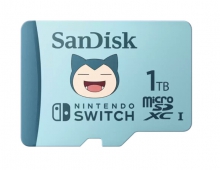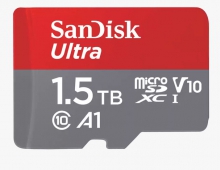
Sandisk Introduces ExtremeFFS File System For SSDs
SanDisk today unveiled the "ExtremeFFS", a flash file system for solid-state drives (SSDs) that yields improvement in performance and reliability for computing applications.
SanDisk claims that the ExtremeFFS has the potential to accelerate random write speeds by up to 100 times over existing systems. It will ship in SanDisk products during 2009.
Speaking in Los Angeles at WinHEC 2008, Rich Heye, senior vice president and general manager for SanDisk?s Solid-State Drive (SSD) Business Unit, presented ExtremeFFS along with two metrics ? vRPM and LDE ? that can help end-users evaluate SSDs.
vRPM enables comparisons in performance between an SSD and a hard disk drive (HDD) or another SSD, and LDE calculates the lifespan of a solid-state drive. Obviously the new tools are Sandisk's answers to the various reports indicating the performance derradation of the SSD disks after using them for sime time.
For SSDs to perform optimally in Windows Vista, and thus replicate or surpass the functionality of hard disk drives, a new flash management technology is needed to accelerate SSD write speed and endurance, he said. "SSDs will revolutionize client storage, but we need new benchmarks that allow them to be treated differently than HDDs."
In 1994 SanDisk introduced TrueFFS, which has been the flash file system for major mobile handset vendors. TrueFFS was incorporated into one previous version of Windows, as the PCMCIA FTL of choice for its performance, scalability and low overhead. When using an SSD under Windows Vista, the demands on the SSD require a large quantity of random writes, as opposed to sequential access. "The mismatch to block size is significant," said Heye.
The ExtremeFFS flash file management system operates on a page-based algorithm, which means there is no fixed coupling between physical and logical location. When a sector of data is written, the SSD puts it where it is most convenient and efficient. The result is an improvement in random write performance ? by up to 100 times ? as well as in overall endurance, according to Sandisk.
ExtremeFFS incorporates a fully non-blocking architecture in which all of the NAND channels can behave independently, with some reading while others are writing and garbage collecting. Another key element of ExtremeFFS is usage-based content localization, which allows the advanced flash management system to "learn" user patterns and over time localize data to maximize the product?s performance and endurance. "This feature might not show up in benchmarks, but we believe it is the right thing to do for end-users," Heye said.
New Performance and Endurance Metrics Proposed
Since hard drive performance is measured in RPMs (revolutions per minute), SSDs need a simple performance metric for comparisons, he said. virtual RPM (vRPM) accurately and easily allows consumers to compare SSDs to HDDs and to each other when used in PCs, said Heye. "vRPM answers the question: How fast would you have to spin a virtual HDD to achieve the level of performance seen by an SSD in a client PC?" Heye predicted that SSD net performance next year will be four times faster than the current generation of SSDs and nearly six times that of the latest 2.5-inch HDDs.
Apart from vRPM, SanDisk is proposing Long-Term Data Endurance (LDE), which simplifies endurance as a useful number, as the first industry metric of long-term data endurance. "This is a lot like measuring tread wear on a tire," said Heye. Major PC OEMs and SSD competitors have reviewed and commented on SanDisk?s initial proposal, he added, and SanDisk has submitted a proposal and white paper to JEDEC, the leading developer of standards for the solid-state industry.
LDE represents the total amount of data writes allowed in the lifespan of an SSD. SanDisk will spec LDE on its future PC SSD products and "we strongly encourage others to follow SanDisk?s lead," he added.
The LDE proposal and white paper, along with a backgrounder on vRPM, is available on the SanDisk website at www.sandisk.com/SSD/Tech_and_metrics.
Speaking in Los Angeles at WinHEC 2008, Rich Heye, senior vice president and general manager for SanDisk?s Solid-State Drive (SSD) Business Unit, presented ExtremeFFS along with two metrics ? vRPM and LDE ? that can help end-users evaluate SSDs.
vRPM enables comparisons in performance between an SSD and a hard disk drive (HDD) or another SSD, and LDE calculates the lifespan of a solid-state drive. Obviously the new tools are Sandisk's answers to the various reports indicating the performance derradation of the SSD disks after using them for sime time.
For SSDs to perform optimally in Windows Vista, and thus replicate or surpass the functionality of hard disk drives, a new flash management technology is needed to accelerate SSD write speed and endurance, he said. "SSDs will revolutionize client storage, but we need new benchmarks that allow them to be treated differently than HDDs."
In 1994 SanDisk introduced TrueFFS, which has been the flash file system for major mobile handset vendors. TrueFFS was incorporated into one previous version of Windows, as the PCMCIA FTL of choice for its performance, scalability and low overhead. When using an SSD under Windows Vista, the demands on the SSD require a large quantity of random writes, as opposed to sequential access. "The mismatch to block size is significant," said Heye.
The ExtremeFFS flash file management system operates on a page-based algorithm, which means there is no fixed coupling between physical and logical location. When a sector of data is written, the SSD puts it where it is most convenient and efficient. The result is an improvement in random write performance ? by up to 100 times ? as well as in overall endurance, according to Sandisk.
ExtremeFFS incorporates a fully non-blocking architecture in which all of the NAND channels can behave independently, with some reading while others are writing and garbage collecting. Another key element of ExtremeFFS is usage-based content localization, which allows the advanced flash management system to "learn" user patterns and over time localize data to maximize the product?s performance and endurance. "This feature might not show up in benchmarks, but we believe it is the right thing to do for end-users," Heye said.
New Performance and Endurance Metrics Proposed
Since hard drive performance is measured in RPMs (revolutions per minute), SSDs need a simple performance metric for comparisons, he said. virtual RPM (vRPM) accurately and easily allows consumers to compare SSDs to HDDs and to each other when used in PCs, said Heye. "vRPM answers the question: How fast would you have to spin a virtual HDD to achieve the level of performance seen by an SSD in a client PC?" Heye predicted that SSD net performance next year will be four times faster than the current generation of SSDs and nearly six times that of the latest 2.5-inch HDDs.
Apart from vRPM, SanDisk is proposing Long-Term Data Endurance (LDE), which simplifies endurance as a useful number, as the first industry metric of long-term data endurance. "This is a lot like measuring tread wear on a tire," said Heye. Major PC OEMs and SSD competitors have reviewed and commented on SanDisk?s initial proposal, he added, and SanDisk has submitted a proposal and white paper to JEDEC, the leading developer of standards for the solid-state industry.
LDE represents the total amount of data writes allowed in the lifespan of an SSD. SanDisk will spec LDE on its future PC SSD products and "we strongly encourage others to follow SanDisk?s lead," he added.
The LDE proposal and white paper, along with a backgrounder on vRPM, is available on the SanDisk website at www.sandisk.com/SSD/Tech_and_metrics.





















